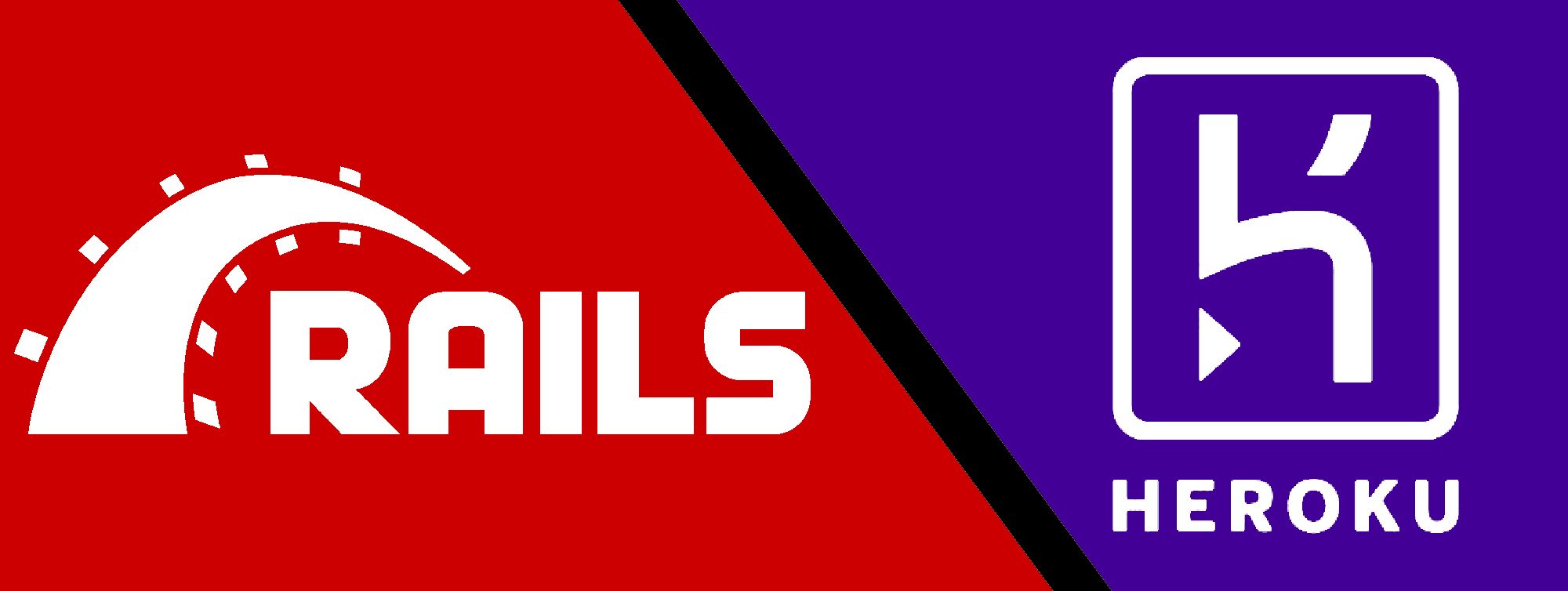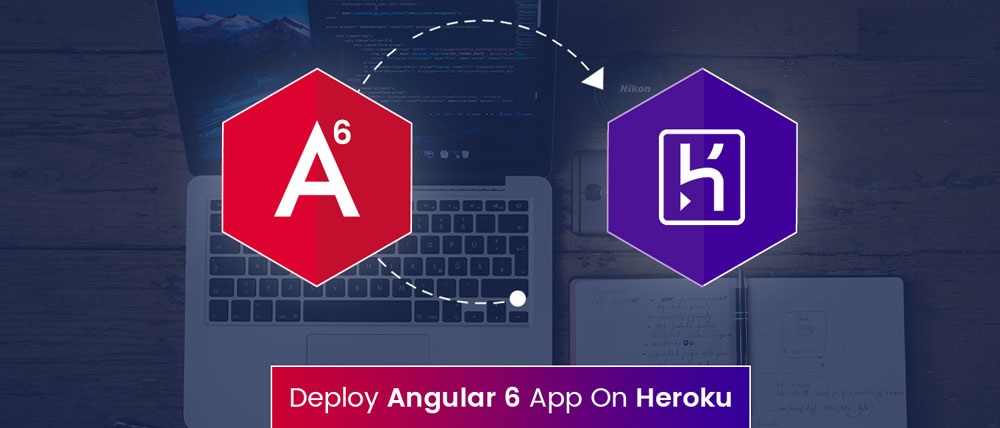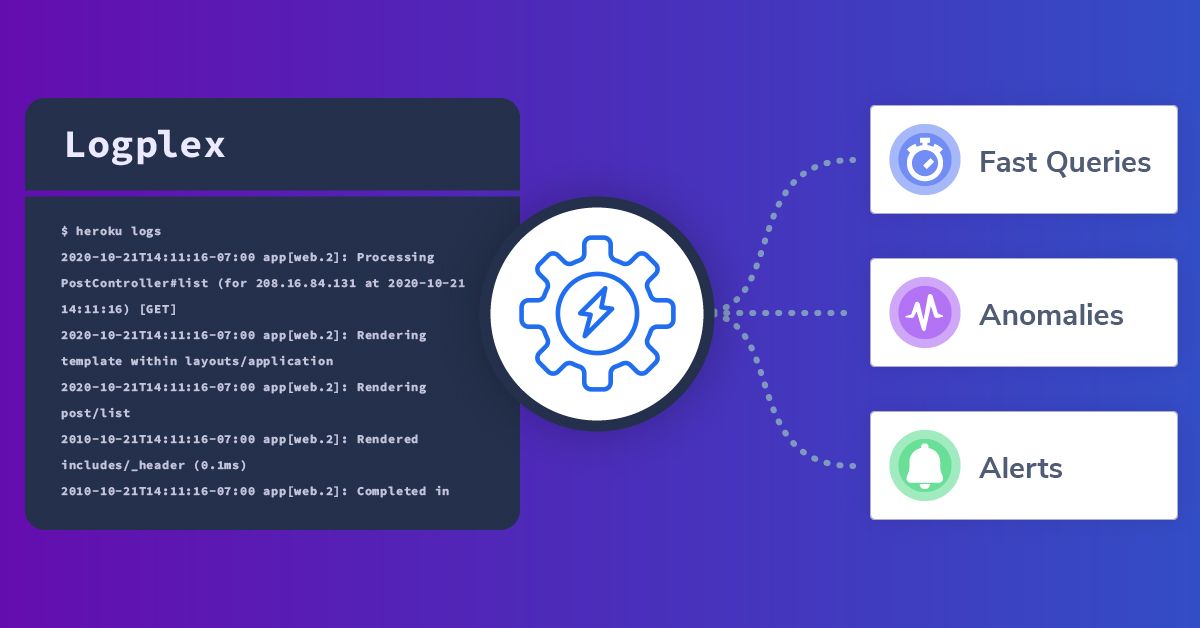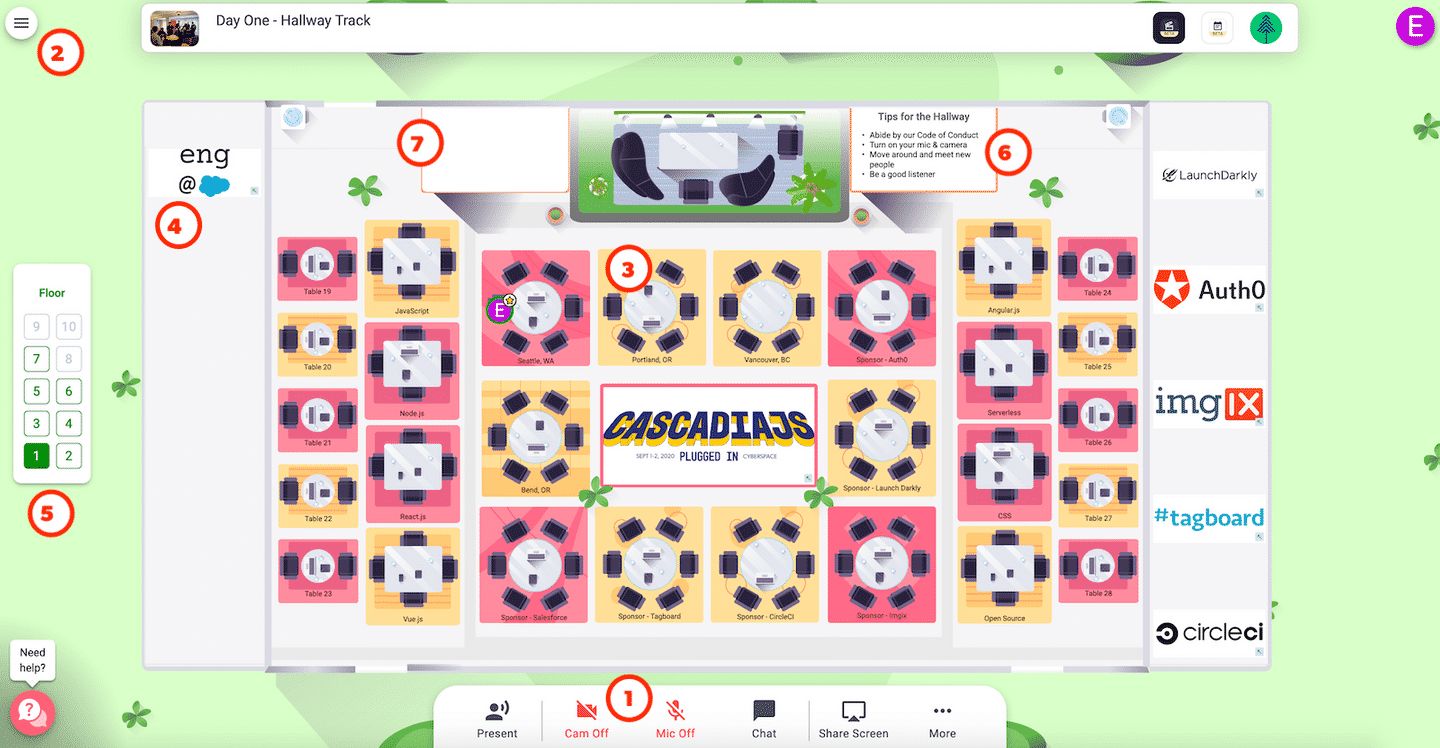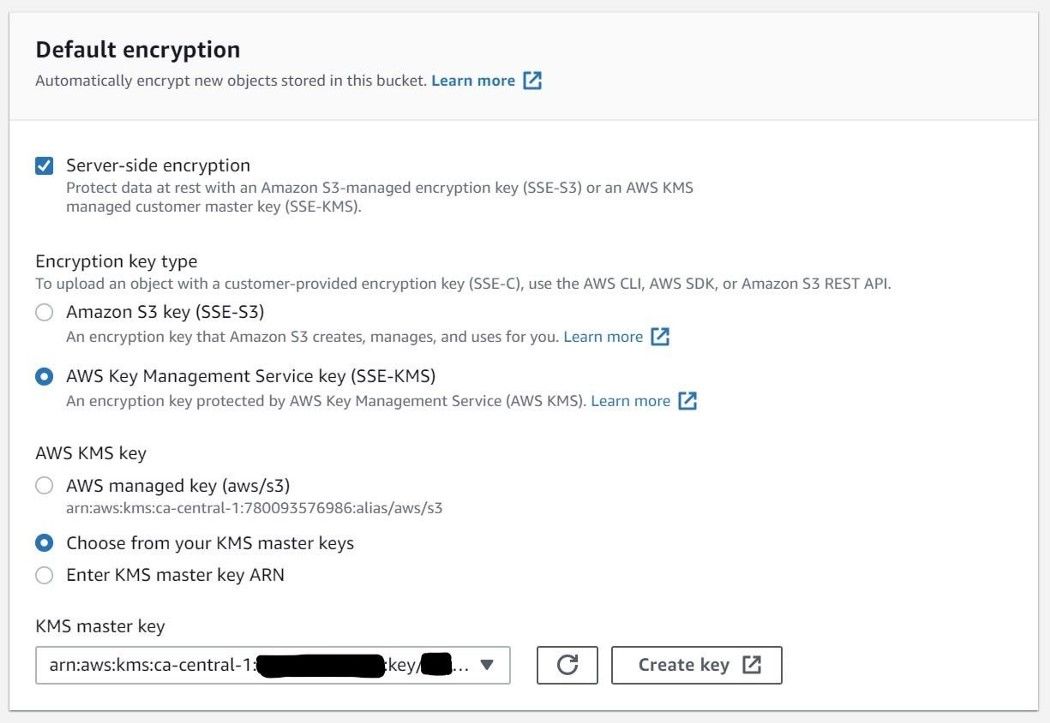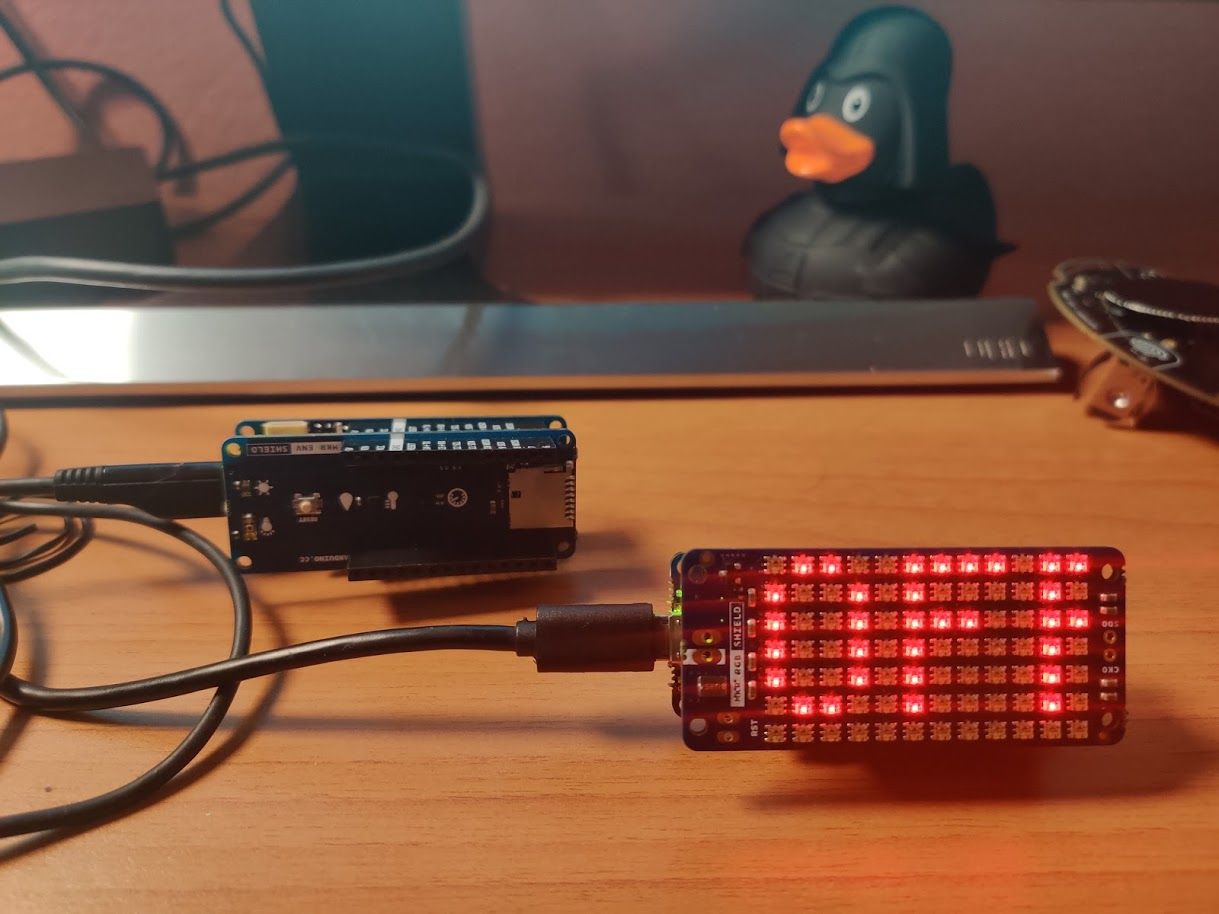
 Deployment of a React app on Heroku is a way of hosting an application on a server, and the server provides everything to keep the app live on the internet
Deployment of a React app on Heroku is a way of hosting an application on a server, and the server provides everything to keep the app live on the internet
 Building telegram bot using Rust.
Building telegram bot using Rust.
 Creating a new Rails app is super easy by itself. And, creating a Rails app set up as an API is not much different.
Creating a new Rails app is super easy by itself. And, creating a Rails app set up as an API is not much different.
 Learn how you can set up an app that supports wildcard and custom domains with SSL on Heroku
Learn how you can set up an app that supports wildcard and custom domains with SSL on Heroku
 The most satisfying thing beyond building something is to make it available to the world. Heroku is great for beginners because it’s a free and “simple” push-to-deploy system.
The most satisfying thing beyond building something is to make it available to the world. Heroku is great for beginners because it’s a free and “simple” push-to-deploy system.
 Hi All, Today we will talk about that how we can change our Angular app environment at run time when deploying the code on Heroku Server.
Hi All, Today we will talk about that how we can change our Angular app environment at run time when deploying the code on Heroku Server.
 Installing Dokku on an Oracle Cloud VM as a free Heroku alternative.
Installing Dokku on an Oracle Cloud VM as a free Heroku alternative.
 Let's walk through how to deploy Docusaurus behind an OAuth proxy which will force users to log in with a 3rd party provider before viewing our documentation.
Let's walk through how to deploy Docusaurus behind an OAuth proxy which will force users to log in with a 3rd party provider before viewing our documentation.
 The project that I am presenting to you was created primarily for personal use and then, by word of mouth, it was used worldwide (geographically).
The project that I am presenting to you was created primarily for personal use and then, by word of mouth, it was used worldwide (geographically).
 Some will tell you that good code is self-documenting. In other words, if you write clear code then you won’t need comments.
Some will tell you that good code is self-documenting. In other words, if you write clear code then you won’t need comments.
 Solo founder, CTO for a small team, or side-hustler. The story is the same. When your app goes down, you’re on the hook. So, what can you do to reduce those dreaded 2AM page alerts?
Solo founder, CTO for a small team, or side-hustler. The story is the same. When your app goes down, you’re on the hook. So, what can you do to reduce those dreaded 2AM page alerts?
 When building projects one of the annoying parts is setting up stuff like web servers, relational databases, and caching. Here's my solution to all that.
When building projects one of the annoying parts is setting up stuff like web servers, relational databases, and caching. Here's my solution to all that.
 Heroku differentiates itself from other cloud providers, by offering a complete, cohesive environment. Where AWS and GCP present a decoupled toolkit, Heroku strives for a seamless, UI-driven experience for the user. This philosophy is clearly embodied in its metrics functionality, which is often a single click or basic configuration file away.
Heroku differentiates itself from other cloud providers, by offering a complete, cohesive environment. Where AWS and GCP present a decoupled toolkit, Heroku strives for a seamless, UI-driven experience for the user. This philosophy is clearly embodied in its metrics functionality, which is often a single click or basic configuration file away.
 Just about everyone who can is working from home now. And while we're lucky to work in an industry that already works from home regularly and easily, there are still some aspects of being in an office that are difficult to replace. One of them is the stand-up meeting.
Just about everyone who can is working from home now. And while we're lucky to work in an industry that already works from home regularly and easily, there are still some aspects of being in an office that are difficult to replace. One of them is the stand-up meeting.
 How to create, build and deploy every component behind a Bike recommendation system
How to create, build and deploy every component behind a Bike recommendation system
 How to Build a Blog with Strapi, Netlify, and React 👨💻
How to Build a Blog with Strapi, Netlify, and React 👨💻
 Now that you are running on Heroku, John Vester helps explore options for scaling your applications or services to meet end-user demands.
Now that you are running on Heroku, John Vester helps explore options for scaling your applications or services to meet end-user demands.
 A few days ago I wanted to make my portfolio (with a blog post included) In ruby on rails. I was watching with my coding friend some React courses on scrimba. I thought it will be a nice project to integrate both technologies on my portfolio website. In this post want to share with you a basic integration and deployment on Heroku using RoR, react and Postgresql.
A few days ago I wanted to make my portfolio (with a blog post included) In ruby on rails. I was watching with my coding friend some React courses on scrimba. I thought it will be a nice project to integrate both technologies on my portfolio website. In this post want to share with you a basic integration and deployment on Heroku using RoR, react and Postgresql.
 Heroku is one of the top PaaS in the market thanks to many of its features that make focus on development instead of configuration and maintenance. This has bee
Heroku is one of the top PaaS in the market thanks to many of its features that make focus on development instead of configuration and maintenance. This has bee
 Heroku has eliminated their free plans, so I’m migrating to Render for my prototype products and services. Let’s see how easy it is to convert to Render PaaS.
Heroku has eliminated their free plans, so I’m migrating to Render for my prototype products and services. Let’s see how easy it is to convert to Render PaaS.
 Stop replacing your monolith with a God service and start doing things better. Let John Vester show you how to get started.
Stop replacing your monolith with a God service and start doing things better. Let John Vester show you how to get started.
 My primary goal is to find a solution that allows my limited time to be focused on providing business solutions instead of getting up to speed with DevOps processes.
My primary goal is to find a solution that allows my limited time to be focused on providing business solutions instead of getting up to speed with DevOps processes.
 This article will provide a brief guide on creating a webhook URL in three popular cloud platforms: AWS, Heroku, and GCP.
This article will provide a brief guide on creating a webhook URL in three popular cloud platforms: AWS, Heroku, and GCP.
 Migrating from Heroku to Qoddi App Platform is very easy and requires a small amount of time. This guide will guide you in the process on moving your app.
Migrating from Heroku to Qoddi App Platform is very easy and requires a small amount of time. This guide will guide you in the process on moving your app.
 As someone who became a Salesforce developer “by accident” 10 years ago and parlayed that into a career and business, I’m fully aware of the dividends that investing in continuous learning and brushing up on the latest in my industry can yield. Even after years of working in the Salesforce ecosystem, earning 11 certifications, and going through several hundred different projects, I’ve found it’s difficult to make the time to keep up with all the new tools and features of modern development (and usually I have the TrailheaDX and Dreamforce conferences each year to get caught up!).
As someone who became a Salesforce developer “by accident” 10 years ago and parlayed that into a career and business, I’m fully aware of the dividends that investing in continuous learning and brushing up on the latest in my industry can yield. Even after years of working in the Salesforce ecosystem, earning 11 certifications, and going through several hundred different projects, I’ve found it’s difficult to make the time to keep up with all the new tools and features of modern development (and usually I have the TrailheaDX and Dreamforce conferences each year to get caught up!).
 As a back-end developer, the happy moment is to show your client that the work is now is live on the internet, everyone on the world can access the website. In this article, I will share my experience step by step to deploy your ruby on rails application on Heroku.
As a back-end developer, the happy moment is to show your client that the work is now is live on the internet, everyone on the world can access the website. In this article, I will share my experience step by step to deploy your ruby on rails application on Heroku.
 RESTful APIs are everywhere, powering more of the modern world than any other API architecture. REST accounts for up to 80% of APIs according to this study by ProgrammableWeb. How those APIs are built and structured can make or break a company in today’s ultra-competitive world. Poorly-designed APIs can be difficult to use, can fail when they are needed most, and are valuable targets for hackers looking for sensitive data. On the other hand, a well-designed API that utilizes best practices makes development a breeze, attracts new customers, and creates confidence among users that can boost retention rates.
RESTful APIs are everywhere, powering more of the modern world than any other API architecture. REST accounts for up to 80% of APIs according to this study by ProgrammableWeb. How those APIs are built and structured can make or break a company in today’s ultra-competitive world. Poorly-designed APIs can be difficult to use, can fail when they are needed most, and are valuable targets for hackers looking for sensitive data. On the other hand, a well-designed API that utilizes best practices makes development a breeze, attracts new customers, and creates confidence among users that can boost retention rates.
 In this article, I will show you how I converted my manual hand crank desk into an automated IoT connected desk. I’ll be talking about how to size and pick motors, and how to connect your custom IoT devices to Google using Heroku as a public interface.
In this article, I will show you how I converted my manual hand crank desk into an automated IoT connected desk. I’ll be talking about how to size and pick motors, and how to connect your custom IoT devices to Google using Heroku as a public interface.
 Remember the 90s? Pokémon, Beanie Babies, Crazy Bones, Super Nintendo, Pogs, and neon windbreakers... Those were the good old days. The web was a simpler place.
Remember the 90s? Pokémon, Beanie Babies, Crazy Bones, Super Nintendo, Pogs, and neon windbreakers... Those were the good old days. The web was a simpler place.
 I’ve seen a few tutorials, how to deploy single page web applications on Heroku, but I’ve really struggled to do it myself, because I wanted to do it a bit differently. I found a way how to deploy any SPA to Heroku using local builds.
I’ve seen a few tutorials, how to deploy single page web applications on Heroku, but I’ve really struggled to do it myself, because I wanted to do it a bit differently. I found a way how to deploy any SPA to Heroku using local builds.
 I just saw that Heroku created the ability to git push heroku from main instead of master. Since I've been wanting to change my Git repos away from master anyway, I thought I'd check it out myself. Luckily, it was extremely simple.
I just saw that Heroku created the ability to git push heroku from main instead of master. Since I've been wanting to change my Git repos away from master anyway, I thought I'd check it out myself. Luckily, it was extremely simple.
 The COVID-19 pandemic and statewide stay-at-home order have caused many companies, including mine, to close their offices, restrict travel, and require all employees to work remotely.
The COVID-19 pandemic and statewide stay-at-home order have caused many companies, including mine, to close their offices, restrict travel, and require all employees to work remotely.
 Do you have an app on Heroku using Postgres? Are you running out of database connections?
Do you have an app on Heroku using Postgres? Are you running out of database connections?
 Many development teams skip having a staging environment for their applications. They often submit a PR, potentially run tests in a CI system, merge to master, and then deploy to production. This is a risky pipeline because there is no true integration environment or integration testing being performed. What’s worse is that if there is an issue they may engage in “cowboy coding” to try to resolve the issue on their live production environment.
Many development teams skip having a staging environment for their applications. They often submit a PR, potentially run tests in a CI system, merge to master, and then deploy to production. This is a risky pipeline because there is no true integration environment or integration testing being performed. What’s worse is that if there is an issue they may engage in “cowboy coding” to try to resolve the issue on their live production environment.
 Is there a way that we can use review apps and still ensure we’re not paying for resources we don’t need?
Is there a way that we can use review apps and still ensure we’re not paying for resources we don’t need?
 We’re all stuck with virtual-only conferences for the foreseeable future. And while this format isn’t ideal, and we all miss the in-person interaction, we might as well make these events the best they can be. We all want something more fun than just another Zoom livestream.
We’re all stuck with virtual-only conferences for the foreseeable future. And while this format isn’t ideal, and we all miss the in-person interaction, we might as well make these events the best they can be. We all want something more fun than just another Zoom livestream.
 In these articles, we’re focusing on how to combine Salesforce with Heroku to build an “eCars” app—a sales and service application for a fictitious company
In these articles, we’re focusing on how to combine Salesforce with Heroku to build an “eCars” app—a sales and service application for a fictitious company
 Introduction
Introduction
 Francis Lacoste is a Senior Director, Software Engineering at Salesforce Heroku. During Live Ask Me Anything session with Hacker Noon community he shared his experience working remote for over 20 years and main lessons he learned from it.
Francis Lacoste is a Senior Director, Software Engineering at Salesforce Heroku. During Live Ask Me Anything session with Hacker Noon community he shared his experience working remote for over 20 years and main lessons he learned from it.
In Francis’s own words:
 Tutorial, about building a chatbot using the Messagebird API for WhatsApp and the Flask framework for Python.
Tutorial, about building a chatbot using the Messagebird API for WhatsApp and the Flask framework for Python.
 This is the 2nd article documenting what I’ve learned from a series of 10 Trailhead Live video sessions on Modern App Development on Salesforce and Heroku. In these articles I’m walking you through how to combine Salesforce with Heroku to build an “eCars” app—a sales and service application for a fictitious electric car company (“Pulsar”) that allows users to customize and buy cars, service techs to view live diagnostic info from the car, and more.
This is the 2nd article documenting what I’ve learned from a series of 10 Trailhead Live video sessions on Modern App Development on Salesforce and Heroku. In these articles I’m walking you through how to combine Salesforce with Heroku to build an “eCars” app—a sales and service application for a fictitious electric car company (“Pulsar”) that allows users to customize and buy cars, service techs to view live diagnostic info from the car, and more.
 Prepare your Heroku-deployed Django application to be closer to production-ready by implementing public & private storage backends for media & static files.
Prepare your Heroku-deployed Django application to be closer to production-ready by implementing public & private storage backends for media & static files.
 Many software projects use secrets - usually, keys to external APIs or credentials to access an external resource such as a database. Your application needs these keys at runtime, so you need to be able to provide them when you deploy your application, or as a step in preparing your deployment environment.
Many software projects use secrets - usually, keys to external APIs or credentials to access an external resource such as a database. Your application needs these keys at runtime, so you need to be able to provide them when you deploy your application, or as a step in preparing your deployment environment.
 Serenade is a voice-to-code software that's available to plug into several popular IDEs, like VS Code and IntelliJ.
Serenade is a voice-to-code software that's available to plug into several popular IDEs, like VS Code and IntelliJ.
 In the fall of 2018, I decided it was time to put my application design and development knowledge to use in order to provide a modernized solution for my mother-in-law’s small business.
In the fall of 2018, I decided it was time to put my application design and development knowledge to use in order to provide a modernized solution for my mother-in-law’s small business.
 The next step in my fitness application journey is to migrate to Heroku Postgres. Check out how easy this turned out to be too.
The next step in my fitness application journey is to migrate to Heroku Postgres. Check out how easy this turned out to be too.
 Feel like learning something new? Want to experience Web 1.0 again? You definitely want to test-drive the Wicked Coolkit.
Feel like learning something new? Want to experience Web 1.0 again? You definitely want to test-drive the Wicked Coolkit.
 Geotagtext is a free demo webapp that uses geolocation to make make geotagging easy. This tutorial shows how to use Heroku, Mapbox, Firebase, to make it happen.
Geotagtext is a free demo webapp that uses geolocation to make make geotagging easy. This tutorial shows how to use Heroku, Mapbox, Firebase, to make it happen.
 5 Tech Companies That Impacted My Life this Week
5 Tech Companies That Impacted My Life this Week
 YAML: literally meaning “Yaml ain’t markup language” can mess you up in the beginning. Rails generates this file for you and you have to change it for Heroku. YAML spacing has to be exact and it’s important to know a tab is not the same as four spaces.
YAML: literally meaning “Yaml ain’t markup language” can mess you up in the beginning. Rails generates this file for you and you have to change it for Heroku. YAML spacing has to be exact and it’s important to know a tab is not the same as four spaces.
 Everyone wants to be more productive without burning out. So, how do you get more done without working more hours? And how do you help the rest of your team improve without taking on the role of taskmaster? The answer: use effective tools.
Everyone wants to be more productive without burning out. So, how do you get more done without working more hours? And how do you help the rest of your team improve without taking on the role of taskmaster? The answer: use effective tools.
 Code Reviews in a remote-driven world yield a better software design and solution. Find out why that is the case in this latest article by John Vester.
Code Reviews in a remote-driven world yield a better software design and solution. Find out why that is the case in this latest article by John Vester.
 One may not expect to use Salesforce for Planning Poker sessions, but see how Aditya Naag's planning-poker-salesforce repository can make this happen quite easily.
One may not expect to use Salesforce for Planning Poker sessions, but see how Aditya Naag's planning-poker-salesforce repository can make this happen quite easily.
 I recently read a great article by Mat Ryer about programmatically generating images in Go and got inspired by it to solve a repetitive task I usually do every month.
I recently read a great article by Mat Ryer about programmatically generating images in Go and got inspired by it to solve a repetitive task I usually do every month.
 In this article, I will be sharing 3 awesome Heroku alternatives that are relatively new to the PaaS space.
In this article, I will be sharing 3 awesome Heroku alternatives that are relatively new to the PaaS space.
 You've just released your new app into the wild, live in production. Success! Now what? Your job is done, right? Wrong. Now that you've deployed your code, it's time to monitor it, collect data, and analyze your metrics.
You've just released your new app into the wild, live in production. Success! Now what? Your job is done, right? Wrong. Now that you've deployed your code, it's time to monitor it, collect data, and analyze your metrics.
 In this article, I’ll show how to build such a tool (using MuleSoft, Heroku, and this guide) to send notifications to Slack when new content is entered.
In this article, I’ll show how to build such a tool (using MuleSoft, Heroku, and this guide) to send notifications to Slack when new content is entered.
 Instead of using shell scripting languages, software developers looking to build their own CLI tools can use the oclif framework to build with Node.js.
Instead of using shell scripting languages, software developers looking to build their own CLI tools can use the oclif framework to build with Node.js.
 Before we dive into the fun part of getting keys shared amongst cloud providers, there are a variety of tools required to get this tutorial working.
Before we dive into the fun part of getting keys shared amongst cloud providers, there are a variety of tools required to get this tutorial working.
 An Overview of DevSecOps and How to Automate It
An Overview of DevSecOps and How to Automate It
 In the final part of his series, the author provides a retrospective of using Heroku for the very first time, detailing the new design and lessons learned.
In the final part of his series, the author provides a retrospective of using Heroku for the very first time, detailing the new design and lessons learned.
 Cloud platforms like Heroku make it easier than ever to host applications: just upload your code, and they’ll deploy it for you. But a common misconception is that, because you don’t own the infrastructure, you can’t really monitor your applications or see under the hood.
Cloud platforms like Heroku make it easier than ever to host applications: just upload your code, and they’ll deploy it for you. But a common misconception is that, because you don’t own the infrastructure, you can’t really monitor your applications or see under the hood.
 In this tutorial, we’ll learn about the end-to-end process of creating an LWC open source application from scratch, hosting it on Github Pages, and deploying it to Heroku.
In this tutorial, we’ll learn about the end-to-end process of creating an LWC open source application from scratch, hosting it on Github Pages, and deploying it to Heroku.
 Developers often fear database changes because a mistake by anyone on your team can lead to a major outage and even data loss. The stakes are higher when changes are not backwards compatible, cannot be rolled back, or impact system performance. This can cause a lack of confidence and slow your team velocity. As a result, database changes are a common failure point in agile and DevOps.
Developers often fear database changes because a mistake by anyone on your team can lead to a major outage and even data loss. The stakes are higher when changes are not backwards compatible, cannot be rolled back, or impact system performance. This can cause a lack of confidence and slow your team velocity. As a result, database changes are a common failure point in agile and DevOps.
 Sometimes, as an architect or developer, you want to try a new architecture or technical solution but just can't seem to find the time to install, configure, debug, and figure out an entirely new concept. Experimentation is a lot of work, project deadlines come first, and new tech is often one of your last priorities.
Sometimes, as an architect or developer, you want to try a new architecture or technical solution but just can't seem to find the time to install, configure, debug, and figure out an entirely new concept. Experimentation is a lot of work, project deadlines come first, and new tech is often one of your last priorities.
 In this article, you will learn how to set up a Heroku Postgres database with Librato for automated monitoring.
In this article, you will learn how to set up a Heroku Postgres database with Librato for automated monitoring.
 As part of my Fitness application journey, the CloudAMQP service is introduced into the Heroku-based service in order to process invoices asynchronously.
As part of my Fitness application journey, the CloudAMQP service is introduced into the Heroku-based service in order to process invoices asynchronously.
 As a freelance cloud architect, I spend my time reviewing and playing with the latest and greatest industry trends. Technologies like Kubernetes, ElasticSearch, and Prometheus fill my home and business infrastructure. After many hours of painful configuration and tweaking, they are now tuned to work exactly the way I want.
As a freelance cloud architect, I spend my time reviewing and playing with the latest and greatest industry trends. Technologies like Kubernetes, ElasticSearch, and Prometheus fill my home and business infrastructure. After many hours of painful configuration and tweaking, they are now tuned to work exactly the way I want.
 If you’re an architect or developer looking at event-driven architectures, stream processing might be just what you need to make your app faster, more scalable, and more decoupled.
If you’re an architect or developer looking at event-driven architectures, stream processing might be just what you need to make your app faster, more scalable, and more decoupled.
 If you are like me, then many of your hobby projects and portfolio examples are deployed to Heroku. Like Github Pages, it is an attractive option to host your project because it is free. Unlike Github Pages, you can host a server on Heroku, so I use it whenever I need a free place to deploy a full-stack application.
If you are like me, then many of your hobby projects and portfolio examples are deployed to Heroku. Like Github Pages, it is an attractive option to host your project because it is free. Unlike Github Pages, you can host a server on Heroku, so I use it whenever I need a free place to deploy a full-stack application.
 I’ve had a hard time figuring out how to get a Phaser 3 Game deployed on Heroku. This is why I’m going to show you how to create a brand new node.js project, integrate it with Webpack and Phaser 3 game engine using Express as a Webserver, and deploy it to Heroku, so we can see it live.
I’ve had a hard time figuring out how to get a Phaser 3 Game deployed on Heroku. This is why I’m going to show you how to create a brand new node.js project, integrate it with Webpack and Phaser 3 game engine using Express as a Webserver, and deploy it to Heroku, so we can see it live.
 Continuous deployment doesn’t need to be this hard to set up.
Continuous deployment doesn’t need to be this hard to set up.
 You've probably heard about Heroku by now, but do you really know how Heroku works and when it should be a consideration?
You've probably heard about Heroku by now, but do you really know how Heroku works and when it should be a consideration?
 In the last several years, Google’s Kubernetes project has generated huge buzz. The project has grown and evolved into a titan of the cloud infrastructure world.
In the last several years, Google’s Kubernetes project has generated huge buzz. The project has grown and evolved into a titan of the cloud infrastructure world.
 Published with permission by Rahul Rai
Published with permission by Rahul Rai
 We all need a little encouragement from time to time, especially when computers insist on doing exactly what we tell them. Fortunately, you can manufacture your own cheerleader to deliver those small affirmations all developers need.
We all need a little encouragement from time to time, especially when computers insist on doing exactly what we tell them. Fortunately, you can manufacture your own cheerleader to deliver those small affirmations all developers need.
 Heroku makes it easy to integrate with the Slack business communication platform. Three available options are presented in this article by @johnjvester
Heroku makes it easy to integrate with the Slack business communication platform. Three available options are presented in this article by @johnjvester
 Time is always a scarce resource for developers. From aggressive deadlines, to multiple projects, to unexpected requirements, our time is constantly in demand. That's why we're always on the lookout for tools and processes that help us boost productivity. In this article, we'll look at five web development tools that might just give you that extra boost in productivity you need.
Time is always a scarce resource for developers. From aggressive deadlines, to multiple projects, to unexpected requirements, our time is constantly in demand. That's why we're always on the lookout for tools and processes that help us boost productivity. In this article, we'll look at five web development tools that might just give you that extra boost in productivity you need.
 In this multi-part series, I'll transform a new application into a multi-tenant experience running in the Heroku ecosystem. This article focuses on the object model, design, architecture, and security.
In this multi-part series, I'll transform a new application into a multi-tenant experience running in the Heroku ecosystem. This article focuses on the object model, design, architecture, and security.
 Notion, the hottest productivity app of the moment, has been promising an API for quite a while. As of today, the official API is nowhere in sight.
Notion, the hottest productivity app of the moment, has been promising an API for quite a while. As of today, the official API is nowhere in sight.
 Earlier this year, a post came out on the Salesforce Developers Blog, entitled “How to Build Progressive Web Apps with Offline Support using Lightning Web Components.” During the post's discussion about using Lightning Web Components (LWC) to build progressive web apps, it mentioned push notifications. My interest was piqued. How simple would it be to use LWC to build an app for push notifications? It turns out — really simple.
Earlier this year, a post came out on the Salesforce Developers Blog, entitled “How to Build Progressive Web Apps with Offline Support using Lightning Web Components.” During the post's discussion about using Lightning Web Components (LWC) to build progressive web apps, it mentioned push notifications. My interest was piqued. How simple would it be to use LWC to build an app for push notifications? It turns out — really simple.
 Continuous integration and continuous delivery (CI/CD) are best practices in today’s software engineering development process.
Continuous integration and continuous delivery (CI/CD) are best practices in today’s software engineering development process.
 Heroku provides the necessary components to integrate cloud services with Salesforce to easily create a burndown chart to track performance.
Heroku provides the necessary components to integrate cloud services with Salesforce to easily create a burndown chart to track performance.
 If you’re developing web applications, you’re almost certainly going to be constantly interacting with a database. And when it comes time to select the way you’ll interact, the choices can be overwhelming.
If you’re developing web applications, you’re almost certainly going to be constantly interacting with a database. And when it comes time to select the way you’ll interact, the choices can be overwhelming.
 Hello world!
Hello world!
 Earlier this year, a post came out on the Salesforce Developers Blog, entitled “How to Build Progressive Web Apps with Offline Support using Lightning Web Components.” During the post's discussion about using Lightning Web Components (LWC) to build progressive web apps, it mentioned push notifications. My interest was piqued. How simple would it be to use LWC to build an app for push notifications? It turns out — really simple.
Earlier this year, a post came out on the Salesforce Developers Blog, entitled “How to Build Progressive Web Apps with Offline Support using Lightning Web Components.” During the post's discussion about using Lightning Web Components (LWC) to build progressive web apps, it mentioned push notifications. My interest was piqued. How simple would it be to use LWC to build an app for push notifications? It turns out — really simple.
 Big data is on the rise, and data systems are tasked with handling it. But this begs the question: Are these systems up for the task?
Big data is on the rise, and data systems are tasked with handling it. But this begs the question: Are these systems up for the task?
 Installing Devtron - An opensource Heroku-like platform over k3s - lightweight kubernetes. Devtron is an end-to-end software delivery workflow for Kubernetes
Installing Devtron - An opensource Heroku-like platform over k3s - lightweight kubernetes. Devtron is an end-to-end software delivery workflow for Kubernetes
 Start using GraphQL in legacy portions of your app without breaking any existing contracts with functionality that may still rely on the original REST API.
Start using GraphQL in legacy portions of your app without breaking any existing contracts with functionality that may still rely on the original REST API.
 This is the third article documenting what I’ve learned from a series of 10 Trailhead Live video sessions on Modern App Development on Salesforce and Heroku.
This is the third article documenting what I’ve learned from a series of 10 Trailhead Live video sessions on Modern App Development on Salesforce and Heroku.
 Huginn: An Open-Source, Self-Hosted IFTTT
Huginn: An Open-Source, Self-Hosted IFTTT
 Humans are complex creatures, with a wide variety of motivations for getting work done. Our motivation as developers is not purely extrinsic, or financial—sometimes it's for the joy of delivering code.
Humans are complex creatures, with a wide variety of motivations for getting work done. Our motivation as developers is not purely extrinsic, or financial—sometimes it's for the joy of delivering code.
 Why Microservices
Why Microservices
 JavaScript is single-threaded, so how does it handle asynchronous code without blocking the main thread while it waits for an action to complete?
JavaScript is single-threaded, so how does it handle asynchronous code without blocking the main thread while it waits for an action to complete?
 In the "Moving Away From AWS and Onto Heroku" article, I provided an introduction of the application I wanted to migrate from Amazon's popular AWS solution to Heroku. While AWS is certainly meeting the needs of my customer (my mother-in-law), I am hoping for a solution that allows my limited time to be focused on providing business solutions instead of getting up to speed with DevOps processes.
In the "Moving Away From AWS and Onto Heroku" article, I provided an introduction of the application I wanted to migrate from Amazon's popular AWS solution to Heroku. While AWS is certainly meeting the needs of my customer (my mother-in-law), I am hoping for a solution that allows my limited time to be focused on providing business solutions instead of getting up to speed with DevOps processes.
 If you’re a microservices developer considering communication protocols, choosing an event-driven architecture might just help you rest a little easier at night. With the right design, event-driven architecture can help you to create apps that are decoupled and asynchronous, giving you the major benefits of your app being both performant and easily scalable.
If you’re a microservices developer considering communication protocols, choosing an event-driven architecture might just help you rest a little easier at night. With the right design, event-driven architecture can help you to create apps that are decoupled and asynchronous, giving you the major benefits of your app being both performant and easily scalable.
 Ask questions, ask for help, always be learning, and participate in code reviews. Often.
Ask questions, ask for help, always be learning, and participate in code reviews. Often.
 Introduction: The Postgres Connection Pool Problem
Introduction: The Postgres Connection Pool Problem
 Open-source application diversity is both the biggest boon in the Free and Open-Source Software (FOSS) movement, and its greatest hindrance to adoption. You don’t always own the application you're consuming, and it often comes with certain opinions and limitations imposed by the software author—either intentionally or otherwise.
Open-source application diversity is both the biggest boon in the Free and Open-Source Software (FOSS) movement, and its greatest hindrance to adoption. You don’t always own the application you're consuming, and it often comes with certain opinions and limitations imposed by the software author—either intentionally or otherwise.
 Docker is a container technology that enables developers to run entire applications as a unit. It offers all the benefits of virtual machines, without the high overhead:
Docker is a container technology that enables developers to run entire applications as a unit. It offers all the benefits of virtual machines, without the high overhead:
 In the "Using Heroku to Quickly Build a Multi-Tenant SaaS Product" article, I documented the foundation for a new SaaS solution that I am building (initially for my sister-in-law) — utilizing the Heroku ecosystem. At the end of that article, I had planned to write about the core technologies (Spring Boot, Angular 9, ClearDB, Okta, GitLab and Heroku) in place, as we raced for the 1.0.0 release of the solution.
In the "Using Heroku to Quickly Build a Multi-Tenant SaaS Product" article, I documented the foundation for a new SaaS solution that I am building (initially for my sister-in-law) — utilizing the Heroku ecosystem. At the end of that article, I had planned to write about the core technologies (Spring Boot, Angular 9, ClearDB, Okta, GitLab and Heroku) in place, as we raced for the 1.0.0 release of the solution.
 The IoT world is powerful, but also quite complex. There are many protocols and vendors and the landscape is fragmented. [As Matt Turck has already shown in 2018.]
The IoT world is powerful, but also quite complex. There are many protocols and vendors and the landscape is fragmented. [As Matt Turck has already shown in 2018.]
 Everyone seems to be strapped for time these days and desperate to get more done in less time. I'm in the same boat. Here's to achieve more by doing less.
Everyone seems to be strapped for time these days and desperate to get more done in less time. I'm in the same boat. Here's to achieve more by doing less.
 Go emerged from Google out of a need to build highly performant applications using an easy-to-understand syntax. It's a statically typed, compiled language developed by some of the innovators of C, without the programming burden of manual memory management. Primarily, it was designed to take advantage of modern multicore CPUs and networked machines.
Go emerged from Google out of a need to build highly performant applications using an easy-to-understand syntax. It's a statically typed, compiled language developed by some of the innovators of C, without the programming burden of manual memory management. Primarily, it was designed to take advantage of modern multicore CPUs and networked machines.
 Building a Meme Generator with RedwoodJS
Building a Meme Generator with RedwoodJS
 In part one I discussed the first version/Bluetooth version of my desk upgrade.
In part one I discussed the first version/Bluetooth version of my desk upgrade.
 Ah yes—“It works fine on my machine!” Perhaps the most famous saying in our industry. Even with the advent of containers that provide consistent environments across the SDLC, we still hear developers fall back to this claim when a defect is found. But in the end, if the code doesn't work in test or production, it doesn't work—even if it works locally. So as a developer, being able to deep dive into your containerized application to fix the problem—regardless of the environment—is a critical skill we must all learn.
Ah yes—“It works fine on my machine!” Perhaps the most famous saying in our industry. Even with the advent of containers that provide consistent environments across the SDLC, we still hear developers fall back to this claim when a defect is found. But in the end, if the code doesn't work in test or production, it doesn't work—even if it works locally. So as a developer, being able to deep dive into your containerized application to fix the problem—regardless of the environment—is a critical skill we must all learn.
 I'm going to show you how easy it is to develop a simple web application in Go, package it as a lightweight Docker image, and deploy it to Heroku.
I'm going to show you how easy it is to develop a simple web application in Go, package it as a lightweight Docker image, and deploy it to Heroku.
 If you're comfortable with working with traditional development platforms such as Heroku, but now you need to integrate into Salesforce data, there are many unexpected differences that you might discover.
If you're comfortable with working with traditional development platforms such as Heroku, but now you need to integrate into Salesforce data, there are many unexpected differences that you might discover.
 Start using GraphQL in legacy portions of your app without breaking any existing contracts with functionality that can still rely on the original REST API.
Start using GraphQL in legacy portions of your app without breaking any existing contracts with functionality that can still rely on the original REST API.
 In today's economy, more and more companies exist primarily online. While there's much discussion around the consequences of leaving behind the traditional brick and mortar business, one aspect that gets less attention is the significant change in how these companies are now managing their data. Increasingly, businesses seek to understand their customers and how best to meet their needs in a way that monthly reports and KPI charts just can’t address.
In today's economy, more and more companies exist primarily online. While there's much discussion around the consequences of leaving behind the traditional brick and mortar business, one aspect that gets less attention is the significant change in how these companies are now managing their data. Increasingly, businesses seek to understand their customers and how best to meet their needs in a way that monthly reports and KPI charts just can’t address.
 I love side projects. They give me the opportunity to flex my creative muscles and tinker with tech like the Internet of Things (IoT) in new ways. Fortunately, I didn't have to look far for my next one; a common conundrum for pet owners fueled this concept for an IoT dog collar.
I love side projects. They give me the opportunity to flex my creative muscles and tinker with tech like the Internet of Things (IoT) in new ways. Fortunately, I didn't have to look far for my next one; a common conundrum for pet owners fueled this concept for an IoT dog collar.
 Introduction
Introduction
 The world of web development moves fast, especially in the JavaScript ecosystem. New features, frameworks, and libraries are constantly emerging, and the minute you stop learning is the minute your skill set starts to become obsolete.
The world of web development moves fast, especially in the JavaScript ecosystem. New features, frameworks, and libraries are constantly emerging, and the minute you stop learning is the minute your skill set starts to become obsolete.
 Welcome back! In the first part of this series, we looked at a very "low-level" way to interact with a relational database by sending it raw SQL strings and retrieving the results. We created a very simple Express application that we can use as an example and deployed it on Heroku with a Postgres database.
Welcome back! In the first part of this series, we looked at a very "low-level" way to interact with a relational database by sending it raw SQL strings and retrieving the results. We created a very simple Express application that we can use as an example and deployed it on Heroku with a Postgres database.
 Published with permission from Alvin Lee.
Published with permission from Alvin Lee.
 In this project, we will be using React.js, Ruby on Rails, React-Quill, and Cloudinary to build a forum whose content is manageable by the site's users.
In this project, we will be using React.js, Ruby on Rails, React-Quill, and Cloudinary to build a forum whose content is manageable by the site's users.


